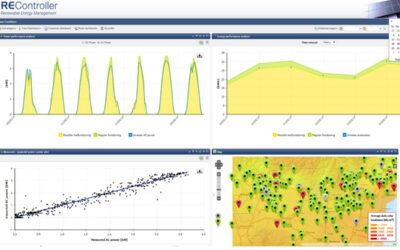AUTHORS
Elke Lorenz, Jose Antonio Ruiz-Arias, Luis Martin, Stefan Wilbert, Carmen Köhler, Rafael Fritz, Alessandro Betti, Philippe Lauret, Mathieu David, Jing Huang, Richard, Perez, Andreas Kazantzidis, Ping Wang, and Yves-Marie Saint-Drenan1
ABSTRACT
Solar resource forecasting is critical for the operation and management of solar power plants and electric grids. Solar radiation is highly variable because it is driven mainly by synoptic and local weather patterns. This high variability presents challenges to meeting power production and demand curves, notably in the case of solar photovoltaic (PV) power plants, which have little or no storage capacity. For concentrating solar power (CSP) plants, variability issues are partially mitigated by the thermal inertia of the plant, including its heat transfer fluid, heat exchangers, turbines, and potentially coupling with a heat storage facility; however, temporally and spatially varying irradiance introduces thermal stress in critical system components and plant management issues that can result in the degradation of the overall system’s performance and reduction of the plant’s lifetime. The variability can also result in lower plant efficiencies than those that occur under operation in stable conditions because optimally operating the plant under variable conditions is significantly more challenging. For PV power plants that have battery storage, forecasts are helpful for scheduling the charging process of the batteries at the most appropriate time, optimizing the fractions of electricity delivered and stored at any instant, and thus avoiding the loss of usable energy.
One year Operation of an Innovative Condition Monitoring Technique in Four Hydropower Plants
AUTHORSAntonio Piazzi, Mauro Tucci, Fabrizio Ruffini, Emanuele Crisostomi ABSTRACTThis work presents the results of...





